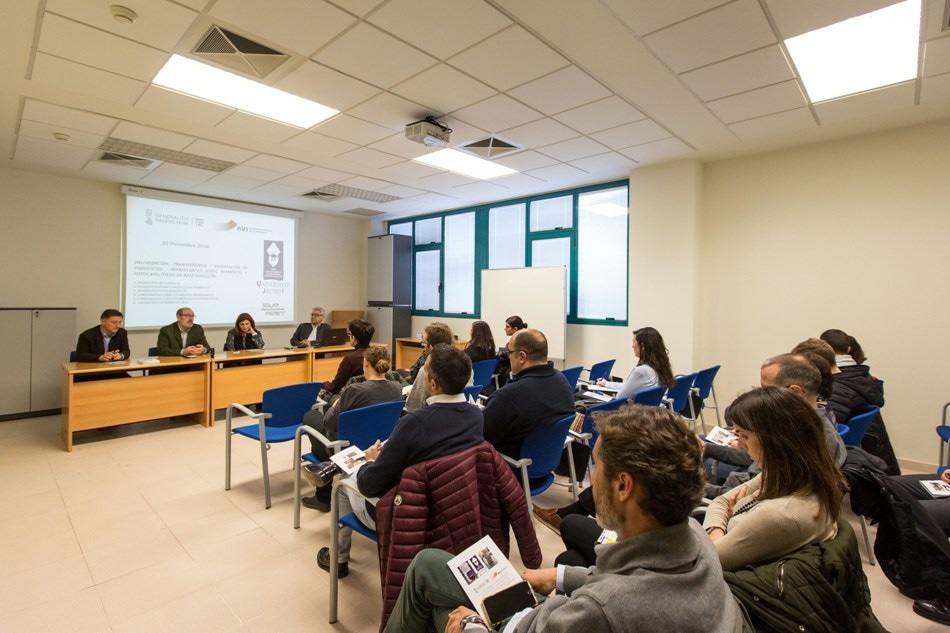Jan 8 2019
The Environmental Inorganic Chemistry and Ceramic Materials team at the Universitat Jaume I (UJI) in Castellón, Spain, has created a research project to evaluate, transfer, and leverage refreshing and photo-catalytic pigments (cool pigments) with a Scheelite base.
 Project presentation. (Image credit: RUVID)
Project presentation. (Image credit: RUVID)
These pigments are used to reduce the temperature of buildings as well as to absorb part of the environmental pollution.
In the last few months, researchers have carried out efficacy tests of the pigments on the rooftop of the UJI’s Higher School of Technology and Experimental Sciences, with financial support from the Valencian Agency for Innovation (AVI). They have found that the photo-catalytic pigments used had the ability to reduce air pollution by nearly 20%, particularly concerning volatile organic compounds, carbon monoxide, and nitrous oxides.
Additionally, the team tested refreshing pigments with high infrared reflectance, which eliminated the infrared radiation rays from the buildings and thus reduced the temperature of the surface by approximately 3 ○C. At the same time, they also prevented the urban heat island effect, that is, the absorption of solar energy by dark, asphalted surfaces from cities and slow discharge of the energy, causing the temperature of urban areas to be higher when compared to the surroundings, and also increasing the probability of smogs (polluting clouds).
The project has been developed by scientists Guillermo Monrós, Vicente Esteve, and Mario Llusa in collaboration with Arnau Monrós and Sara Cerro from the Department of Inorganic and Organic Chemistry of Castellón’s public university.